The Reserve Bank of Australia’s (RBA) latest Bulletin includes an analysis of Australia’s rental market, and forecasts “strong growth in rents expected over coming years”.
The RBA notes that “CPI rent inflation has picked up and leading indicators point to further increases”.
“Advertised rents measure the prices of dwellings that are available for new tenants to rent, and so provide some indication of the future path of CPI rents, as well as capturing the experience of households seeking a new rental home”, according to the RBA:
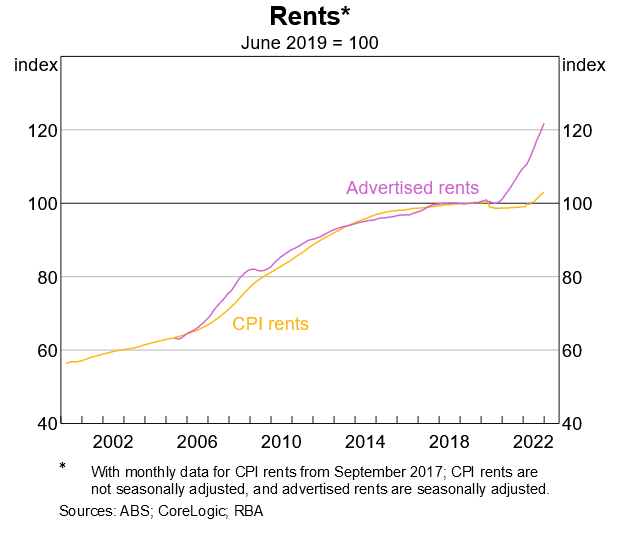
The RBA lists two specific demand-side factors that are helping to drive up rents.
First, average household size declined by around 1% over the pandemic “to its lowest level in at least a quarter of a century”.
This decline in household size “is estimated to have contributed to around 120,000 additional households being formed and, as a result, additional demand in the rental market”, according to the RBA.
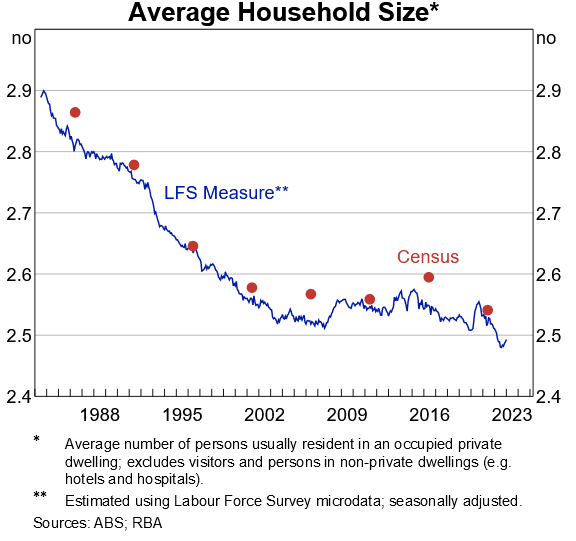
Second, and more importantly, “the reopening of the international border in early 2022 also contributed to declines in vacancy rates, particularly in Sydney and Melbourne”.
“Net overseas migration is expected to increase significantly over the coming year or so, supporting a pick-up in population growth”.
“Around 240,000 people are expected on net to migrate to Australia over this time, equivalent to demand for an additional 96,000 properties”.
Here the RBA is already way behind the ball with net overseas migration (NOM) soaring by 310,900 in the year to September 2022:
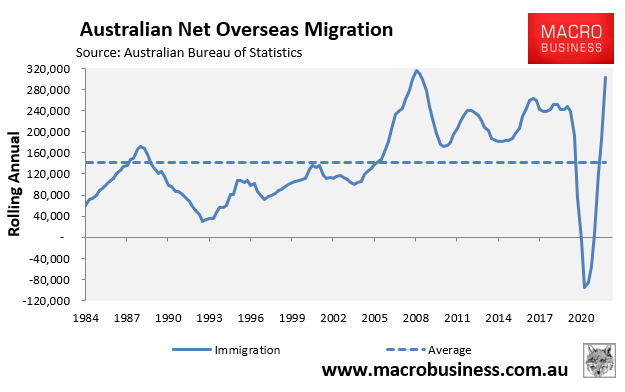
Monthly arrivals data to February 2023 shows that net temporary visa arrivals are booming on the back of international students, which suggest unprecedented levels of NOM of more than 400,000 is likely in 2023:
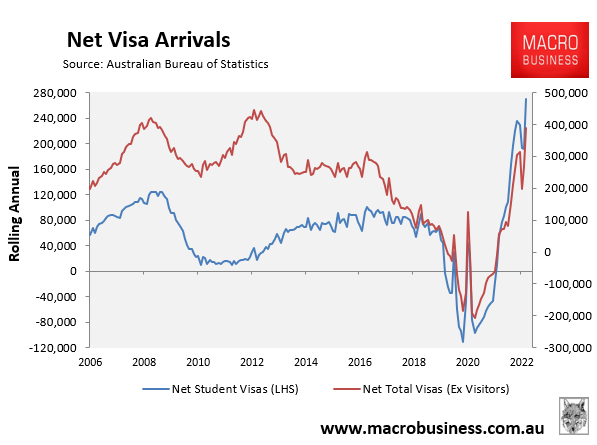
On the supply side, the RBA notes that “growth in the stock of total dwellings has slowed in recent years, reflecting a slowdown in apartment construction”.
“This is important for rental supply, as about half of the total stock of apartments are rented out”.
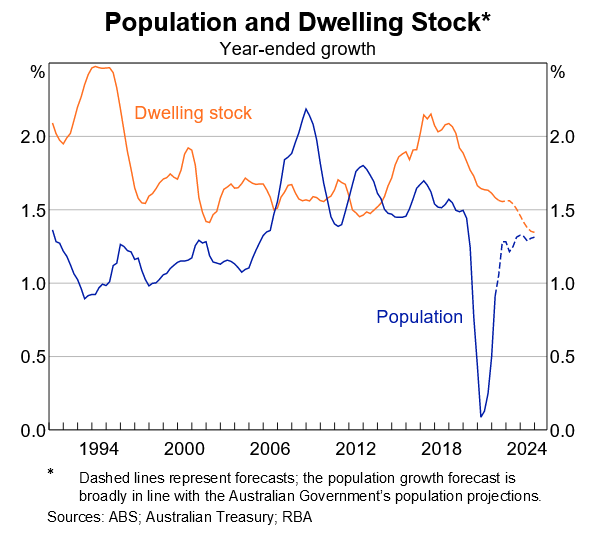
“Shortfalls of public housing for those most in need have also become more acute, with the number of ‘greatest need’ households on public housing waitlists almost doubling since 2016”, the RBA notes.
“While the stock of public housing has grown by 3% over the past decade, the total number of households in Australia and the total dwelling stock have increased by around 20% over that same period”.
Thus, population growth via immigration has far exceeded the growth in public housing supply, creating chronic shortages.
The RBA warns that “growth in the supply of new rentals available to the market is expected to be subdued over the next few years” given “information from liaison with property developers suggests that higher interest rates and construction costs, combined with declining housing prices and apartment presales, are headwinds to growth in the supply of new dwellings”.
Therefore, “vacancy rates are likely to remain at low levels”.
Again, the RBA’s population projections (see above chart) are laughably low. According to the latest ABS population data and the December quarter national accounts, Australia’s population grew by 482,000 (1.9%) in the 2022 calendar year:
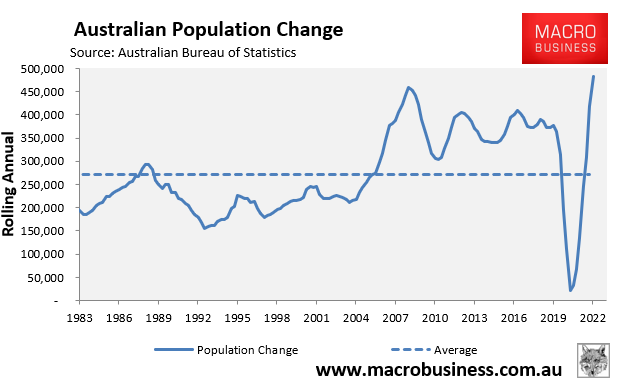
Therefore, the rental market will tighten even further than the RBA expects on the back of record immigration levels.

